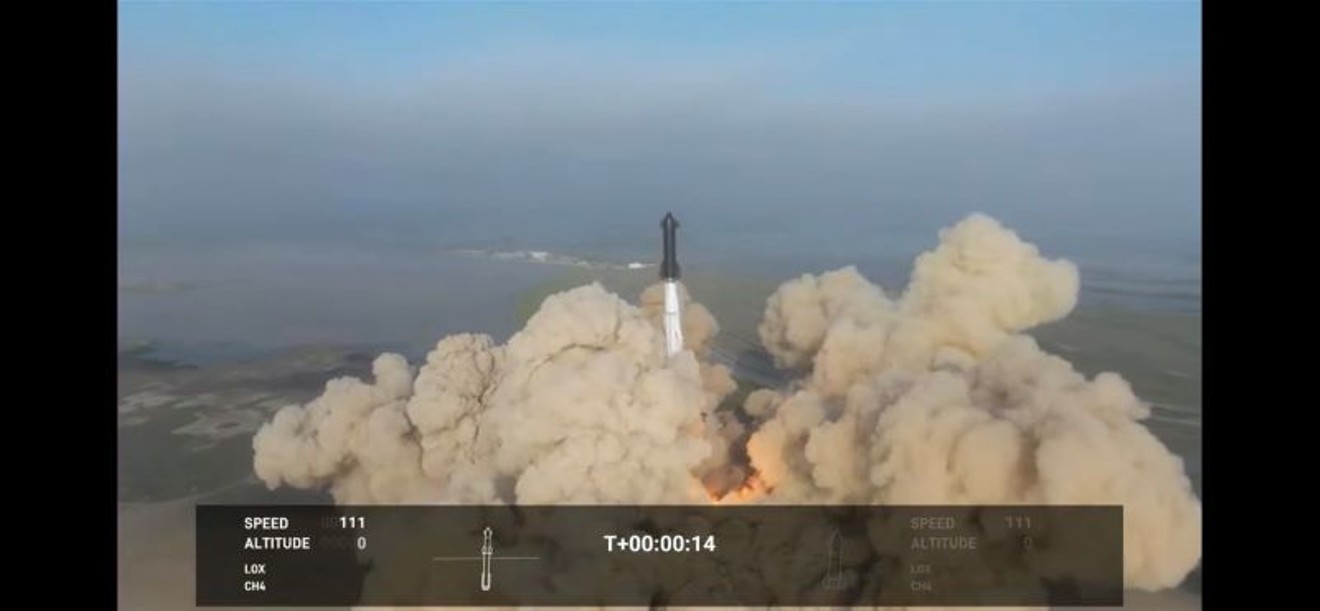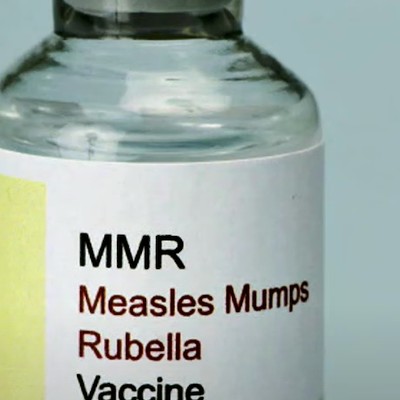Based on everyone’s reactions, you’d almost think Starship’s flight ending in flames only minutes after it began Wednesday was part of SpaceX’s plan.
And maybe it was, in a way.
After all, SpaceX is no stranger to exploding rockets and clunky rocket failures, so why wouldn’t they be bracing for everything to go wrong. In the final hours leading up to the launch from Boca Chica Beach on the shore of South Texas, SpaceX founder and CEO Elon Musk was already cautioning that Thursday’s first fully integrated test flight of Starship might not even happen.
Then as the morning came and the one-hour flight window approached, his team began echoing Musk’s sentiments. While the countdown began to close in on the final 40 seconds—the point of no return where the 394-foot-tall Starship would have to be launched, ready or not—the trio of SpaceX employees giddily commenting on the livestreaming video were already managing expectations.
Just getting off the launchpad would be a win, SpaceX Manager of Quality Systems Engineering Katy Tice repeatedly insisted while her two cohorts on the broadcast enthusiastically agreed. (Tice, an Emmy Award-winning broadcast host seems to be part of Musk’s “deprioritized” SpaceX communications department.)
The SpaceX team assembled at the company’s headquarters in Hawthorne, California, was giddy, cheering as the countdown entered its final seconds and whooping joyfully once the most powerful rocket system in the world ignited its engines.
But once the rocket was aloft it became clear from looking at the underside of the rocket that not all of the 33 methane-fueled Raptor booster engines on its undercarriage were firing.
The next step was supposed to be a smooth detachment of the Starship capsule from the Super Heavy booster, but instead the entire massive structure began tumbling through the air.
“Obviously this does not appear to be a nominal situation, SpaceX aerospace engineer John Insprucker said as the rocket continued to flail before finally exploding 24 miles above the Gulf of Mexico roughly four minutes into the flight. His comment was the only one that hinted the launch-turned-fireworks-display had not unfolded according to plan.
The SpaceX team watching from California went silent for a beat, and the cameras trained on SpaceX founder and Musk captured his face in that moment, carefully devoid of all expression. But Insprucker’s comment was the only company acknowledgement that something had gone wrong.
Insprucker and the rest of SpaceX’s video streaming coterie immediately shifted into full spin mode. “To get this far is amazing,” Tice said. “Everything after clearing the tower was icing on the cake.”
Moments later the SpaceX team was cheering again while somebody sprayed people with champagne. The enormous rocket had lifted off and hadn’t exploded on the launchpad (which would have been a much more expensive and intensive mess to clean up) so SpaceX was going to count this as a win, even as Musk remained pokerfaced.
NASA administrator Bill Nelson’s congratulatory tweet was a bit more enthusiastic: “Every great achievement throughout history has demanded some level of calculated risk, because with great risk comes great reward,” he noted.
(In other words, rockets blowing up is simply a part of the process, and this particular expensive fireball isn’t going to sour NASA on continuing its close partnership with SpaceX or make the federal space agency blink about putting astronauts on a proven iteration of Starship to tote them to the moon a few years down the line.)
Meanwhile, plenty of media outlets have taken pains to underscore SpaceX’s claim that Starship’s first fully integrated test flight erupting into flames was expected, practically guaranteed even.
But there’s one entity that isn’t brushing the launch explosion off, and that’s the Federal Aviation Administration. Previously, the FAA had been slow to supply Starship’s launch license, only issuing it Sunday night, hours before the FAA-scheduled launch window was due to open. On Thursday afternoon, the FAA was much quicker on the draw, pulling the license, grounding Starship and starting an investigation to ensure that “any system, process, or procedure related to the mishap does not affect public safety,” according to the agency. However, this is all standard practice, agency officials have stated.
Overall, from the SpaceX fans who flooded this little corner of South Texas to witness Starship’s test flight to the SpaceX employees themselves, most folks are counting Thursday’s launch as a win.
And it was. As we’ve already noted, making progress in space travel is a messy complicated business, with a lot of failures before success. The company is expected to weather this financially without much of a problem. Meanwhile, rocket pieces scattered across the Texas Gulf Coast may not have actually been the goal, but all of this can still teach SpaceX engineers a lot about what worked and what went wrong with the flight.
Musk himself got on board with this message fairly quickly, albeit in a tone that doesn’t boast his usual bluster. Within 30 minutes of the explosion, he was congratulating the SpaceX team on Twitter, noting that they “learned a lot for next test launch in a few months.”
Support Us
Houston's independent source of
local news and culture
account
- Welcome,
Insider - Login
- My Account
- My Newsletters
- Contribute
- Contact Us
- Sign out

An unplanned failure or a glorious next step?
Screenshot
[
{
"name": "Related Stories / Support Us Combo",
"component": "11591218",
"insertPoint": "4",
"requiredCountToDisplay": "4"
},{
"name": "Air - Billboard - Inline Content",
"component": "11591214",
"insertPoint": "2/3",
"requiredCountToDisplay": "7"
},{
"name": "R1 - Beta - Mobile Only",
"component": "12287027",
"insertPoint": "8",
"requiredCountToDisplay": "8"
},{
"name": "Air - MediumRectangle - Inline Content - Mobile Display Size 2",
"component": "11591215",
"insertPoint": "12",
"requiredCountToDisplay": "12"
},{
"name": "Air - MediumRectangle - Inline Content - Mobile Display Size 2",
"component": "11591215",
"insertPoint": "4th",
"startingPoint": "16",
"requiredCountToDisplay": "12"
}
]
KEEP THE HOUSTON PRESS FREE...
Since we started the Houston Press, it has been defined as the free, independent voice of Houston, and we'd like to keep it that way. With local media under siege, it's more important than ever for us to rally support behind funding our local journalism. You can help by participating in our "I Support" program, allowing us to keep offering readers access to our incisive coverage of local news, food and culture with no paywalls.
Dianna Wray is a nationally award-winning journalist. Born and raised in Houston, she writes about everything from NASA to oil to horse races.
Contact:
Dianna Wray
Trending News
- Houston Texans Uniform Leak-Gate Ends Today at 10 a.m.
- Four Reasons the Astros Are Bad at Baseball Right Now
- Measles On The Rise, Health Experts Say, and Houston Isn't Immune
-
Sponsored Content From: [%sponsoredBy%]
[%title%]

Don't Miss Out
SIGN UP for the latest
news, free stuff and more!
Become a member to support the independent voice of Houston
and help keep the future of the Houston Press FREE
Use of this website constitutes acceptance of our
terms of use,
our cookies policy, and our
privacy policy
The Houston Press may earn a portion of sales from products & services purchased through links on our site from our
affiliate partners.
©2024
Houston Press, LP. All rights reserved.





